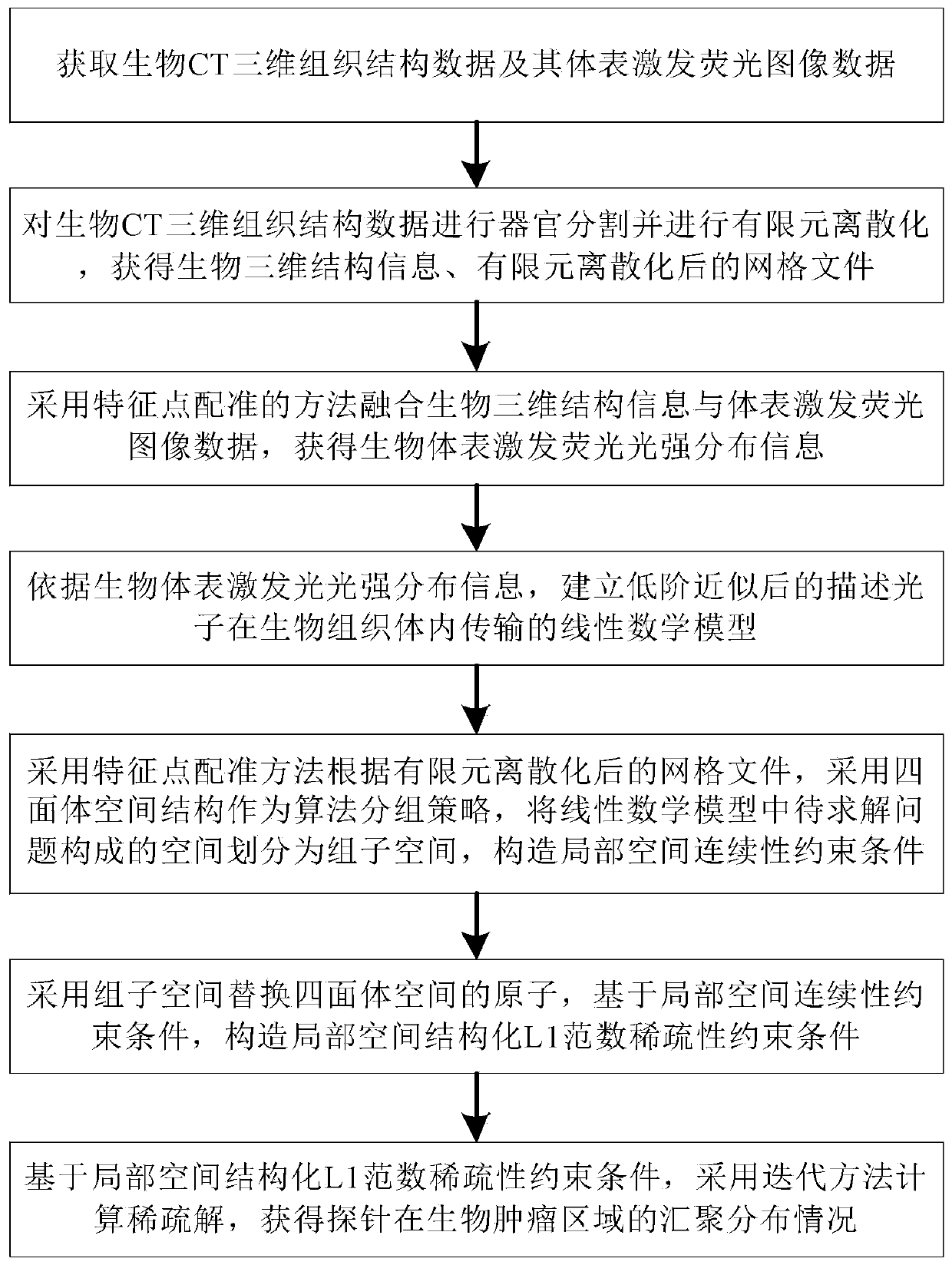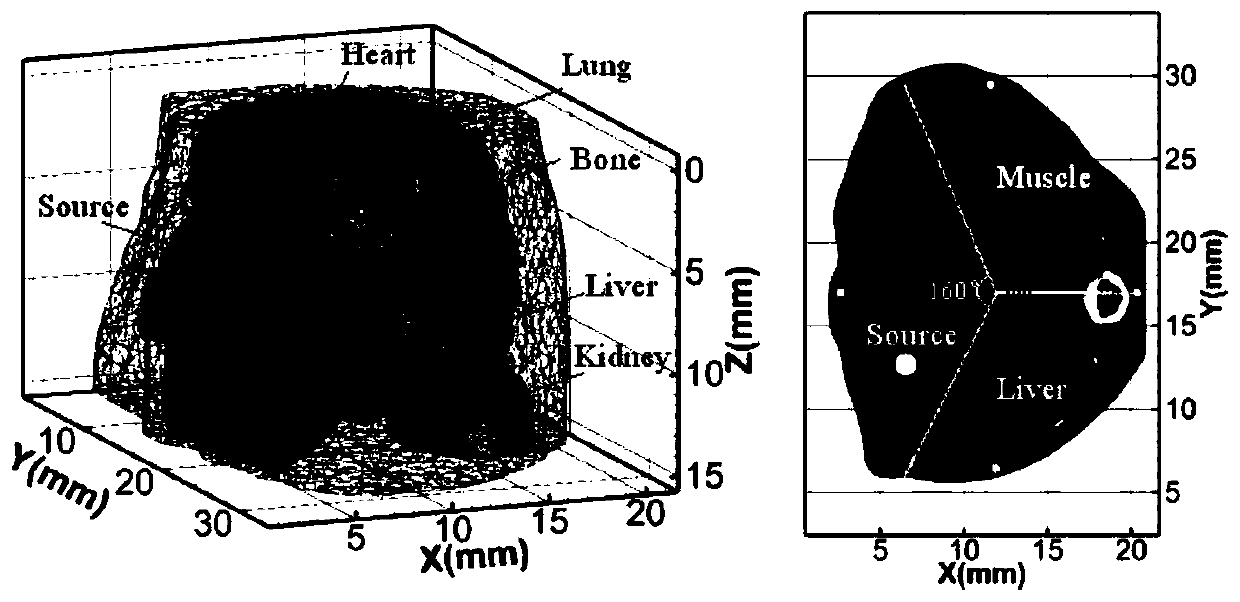Fluorescence molecular tomography reconstruction method based on sparsity self-adaptive group orthogonal matching pursuit
A technology of orthogonal matching tracking and exciting fluorescence, which is applied in the direction of analysis using fluorescence emission, diagnosis and diagnosis using tomography, and can solve the problems of less robust process, discontinuous space, and too sparse area, etc., and achieve quasi-positioning , Approximate morphological distribution, good reconstruction effect
- Summary
- Abstract
- Description
- Claims
- Application Information
AI Technical Summary
Problems solved by technology
Method used
Image
Examples
Embodiment Construction
[0051] The application will be further described in detail below in conjunction with the accompanying drawings and embodiments. It should be understood that the specific embodiments described here are only used to explain related inventions, not to limit the invention. It should also be noted that, for the convenience of description, only the parts related to the related invention are shown in the drawings.
[0052] It should be noted that, in the case of no conflict, the embodiments in the present application and the features in the embodiments can be combined with each other. The present application will be described in detail below with reference to the accompanying drawings and embodiments.
[0053] An excitation fluorescence tomography reconstruction method of the present invention is a sparseness adaptive group orthogonal matching pursuit, the excitation fluorescence tomography reconstruction method comprises:
[0054] Step S10, obtaining biological CT three-dimensiona...
PUM
 Login to View More
Login to View More Abstract
Description
Claims
Application Information
 Login to View More
Login to View More - R&D
- Intellectual Property
- Life Sciences
- Materials
- Tech Scout
- Unparalleled Data Quality
- Higher Quality Content
- 60% Fewer Hallucinations
Browse by: Latest US Patents, China's latest patents, Technical Efficacy Thesaurus, Application Domain, Technology Topic, Popular Technical Reports.
© 2025 PatSnap. All rights reserved.Legal|Privacy policy|Modern Slavery Act Transparency Statement|Sitemap|About US| Contact US: help@patsnap.com



